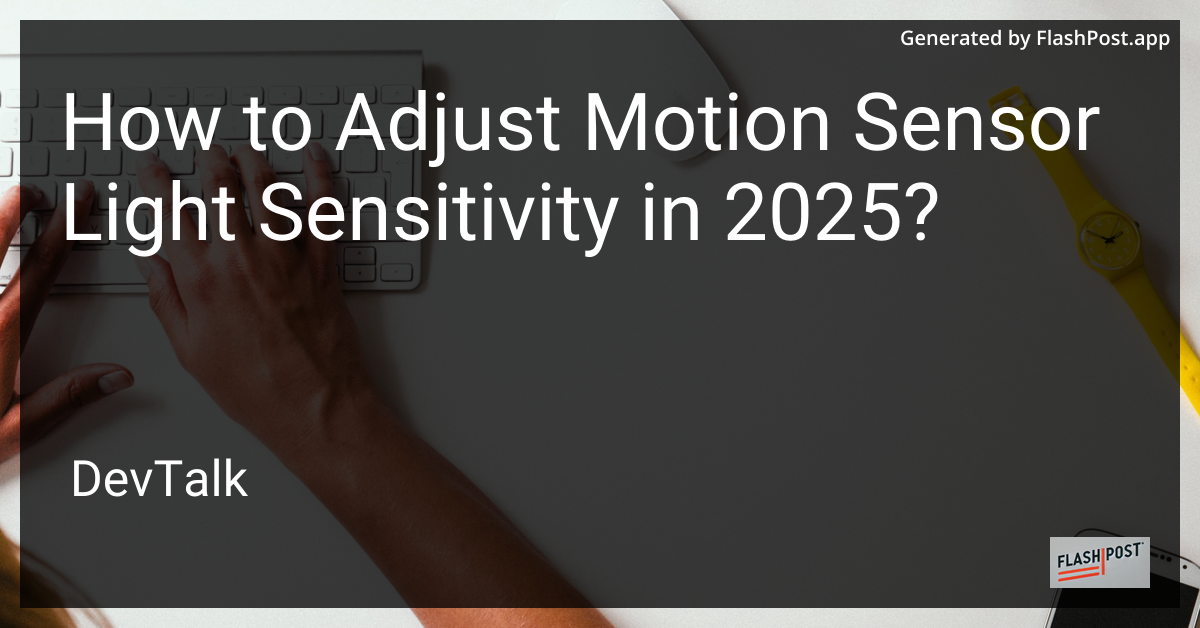How to Adjust Motion Sensor Light Sensitivity in 2025?

How to Adjust Motion Sensor Light Sensitivity in 2025
Motion sensor lights have become an integral part of modern home security and energy efficiency strategies.
Properly adjusting the sensitivity of these sensors can improve their performance while reducing unnecessary activations. In this guide, we'll walk you through the process of adjusting motion sensor light sensitivity in 2025.
Understanding Motion Sensor Lights
Motion sensor lights detect physical movement in their field of view using various technologies, such as infrared or microwave. They can be used both indoors and outdoors, illuminating areas only when activity is detected, which helps in saving energy and improving convenience.
Why Adjust Sensitivity?
Adjusting the sensitivity of your motion sensor lights is important to ensure they are neither too sensitive (leading to false alarms from small animals, passing cars, or wind-blown leaves) nor too insensitive (failing to detect actual human presence). Finding the appropriate sensitivity setting helps in:
- Reducing False Alarms: Prevents lights from turning on due to non-threatening movements.
- Enhancing Security: Ensures lights activate when there is actual human activity.
- Saving Energy: Minimizes unnecessary power usage.
Steps to Adjust Motion Sensor Light Sensitivity
Step 1: Identify the Sensor Control Panel
Most motion sensor lights have a control panel where you can adjust various settings. This panel is usually located behind the light fixture or inside a covered compartment.
Step 2: Locate the Sensitivity Adjustment Dial or Setting
Look for a dial or a switch labeled "Sensitivity." In some models, this might be a digital interface with touchscreen controls or connected to a mobile app, especially in advanced smart sensor systems available in 2025.
Step 3: Make Incremental Adjustments
- Begin Low: Start by setting the sensitivity to a lower level. This assists in reducing unwanted activations.
- Test the Range: Walk through the detection zone while observing from a safe distance. Note when the light activates or fails to activate.
- Incrementally Increase: If the light fails to turn on in response to genuine movement, gradually increase the sensitivity in small increments.
Step 4: Test Under Different Conditions
Test your motion sensor lights during various times of the day and in different weather conditions to ensure optimal performance across all potential scenarios.
Step 5: Refer to the Manufacturer’s Manual
Some modern systems have unique settings catered to specific environmental needs or advanced AI features. Always refer to the manufacturer's manual for model-specific instructions.
Advanced Solutions: Smart Motion Sensors
In 2025, smart home integration allows for more precise control over motion sensor lights. With the use of smartphone apps, you can easily adjust sensitivity settings remotely, receive activation alerts on your mobile device, and integrate with other smart home systems for enhanced automation.
Conclusion
Adjusting motion sensor light sensitivity is crucial for optimizing security and efficiency. By following these steps and adapting to new technologies available in 2025, you can significantly enhance the functionality of your lighting systems.
For more personal development guides, check out our articles on emotional balance maintenance and strategies to ace getting a job promotion.
Motion sensors are constantly evolving with technology, making it easier to secure and manage your living or working space. Ensure you keep up with the latest innovations to optimize your setup effectively.